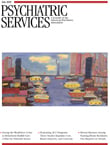Intervention and Resilience After Mass Trauma
This book derives from the Sidney E. Frank Conference on early psychological intervention after mass trauma, held at New York Medical College in Valhalla, New York, on June 13, 2006. Eight of the authors spoke at the conference, which was chaired by the coeditors of the book. All are among the most outstanding experts in this field. The opening paragraph of Intervention and Resilience After Mass Trauma addresses just how devastating natural events can be. The Southeast Asian tsunami in 2004 killed and traumatized hundreds of thousands, as have several earthquakes, including the 1976 earthquake in Tangshan, China, which caused at least 255,000 deaths and perhaps as many as 655,000. Such events "highlight the difficulty of planning and understanding the mental health effects of traumatic events, disasters and terrorism. Earthquake disasters remind us that the distinction between natural and human-made disasters is only relative." This book is an essential and concise new contribution providing education for leaders and health professionals preparing for and responding to mass traumas such as these.
One-quarter of this book is devoted to the first chapter, by Beverly Raphael, on "Systems, Science and Populations" and early interventions. Early intervention is "an initiative focused on mitigating the trajectories and levels of pathology, functional impairment, and adverse mental health and behavioral outcomes. It is based on the hypothesis that it will be possible to prevent the full development of disorder, or lessen its severity, extent, associated impairments, and disabilities." This chapter examines three themes: the factors that may affect mental health, explored through systems analysis; the science of early intervention; and the delivery of early interventions. She concludes with an appeal that if early intervention is to be a response to disaster and terrorism, then there is a need to strengthen its scientific foundations and to "badge" it and encourage its adoption by governments and other organizations; it must receive adequate funding for it to be utilized and to be effective.
The next chapter explains the new and important public health topic of community resilience, which enhances and interacts with individual resilience. Next, Patricia Watson describes "psychological first aid" (PFA), a central early intervention today. The editors in the epilogue cite the eponym SCCEO for the evidence-based principles of PFA: safety; calming; connectedness both for instrumental (practical) and emotional support; efficacy, including skills to respond as well as belief in one's ability to respond; and optimism and hope. PFA involves those "basic strategies to reduce psychological distress," including "orientation to disaster and recovery efforts, reduction of physiological arousal, mobilization of support for those who are most distressed, facilitation of reunion with loved ones and keeping families together, providing education about available resources and coping strategies, and using effective risk communication techniques." The author clarifies that debriefing methods do not reduce posttraumatic stress disorder (PTSD); in contrast she points out that many findings support PFA and that further randomized controlled trials of PFA are needed in a variety of disaster contexts.
Chapters on acute stress disorder and early interventions by Richard Bryant and "The Role of Pharmacotherapy in Early Interventions" by Matthew Friedman are detailed academic chapters—both authors are leaders in their fields. Although the state of psychological knowledge and early cognitive interventions have progressed in research settings, Bryant candidly suggests that their benefits in disasters may have been overplayed and that they need further work to be practical for early interventions after disasters. Friedman's chapter is the most detailed I have seen on this use of pharmacotherapy; it is not to be missed. He concludes by suggesting that among many options, anticonvulsants and mood stabilizers may be strong candidates for early intervention for PTSD.
Carl Bell's chapter "Should Culture Considerations Influence Early Intervention?" is almost a tour-de-force in short form, explaining what we all need to know about culture and trauma. It encapsulates many other articles explaining how powerful the influences of culture, race, and ethnicity are in increasing vulnerability to PTSD in American society. He looks at the examples found in the black American experience of slavery and racism; in the heritage of the American Indian; and in refugee trauma, such as among many immigrants from Southeast Asia, some military veterans, and others. Arieh Shalev's chapter "Resilience Is the Default: How Not to Miss It" helpfully addresses conceptual, research, and practical aspects of this still neglected topic. A sign of resilience I've heard Shalev present is included: "virtual safety maps" that disaster and terrorism survivors use to "restructure space and time into threatening and non-threatening components." A terrific section of the chapter explains "eight ways to miss or weaken resilience: 1) Dramatize, 2) Pathologize, 3) Catastrophize, 4) Create negative expectations, 5) Blur boundaries (e.g. between mental disorder and responses), 6) Lie, mislead, misinform or otherwise manipulate information, 7) 'Intervene' (and emphasize the role of experts and giving preference to top-down processes-at the expense of individuals' resourcefulness), and 8) Ignore, show distance or indifference, lack of sharing."
In the mental health field, much of such excellent writing is in books like this and less can be found in easily retrievable publications. It is hoped that, with increased local, national, and international focus, such writings become more readily available to the leaders and health care providers who need them most.
The reviewer reports no competing interests.




